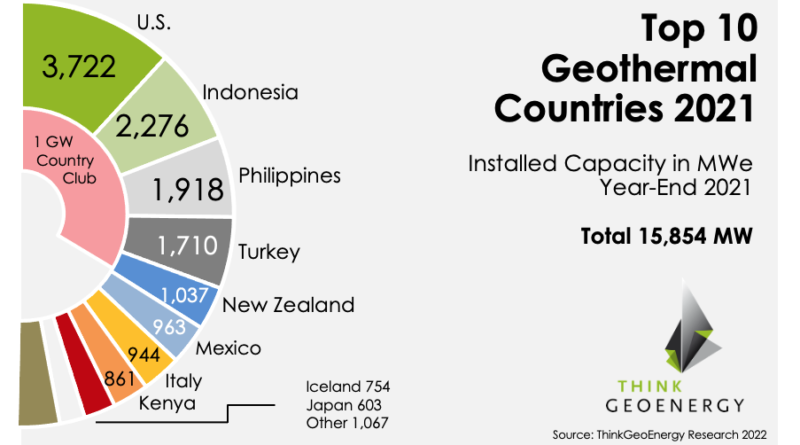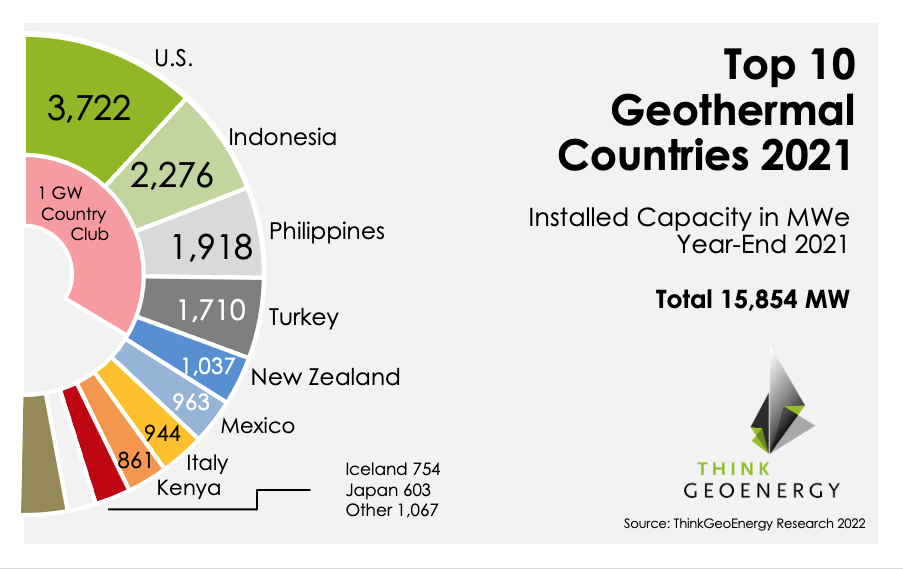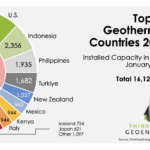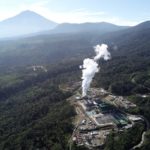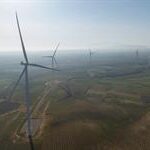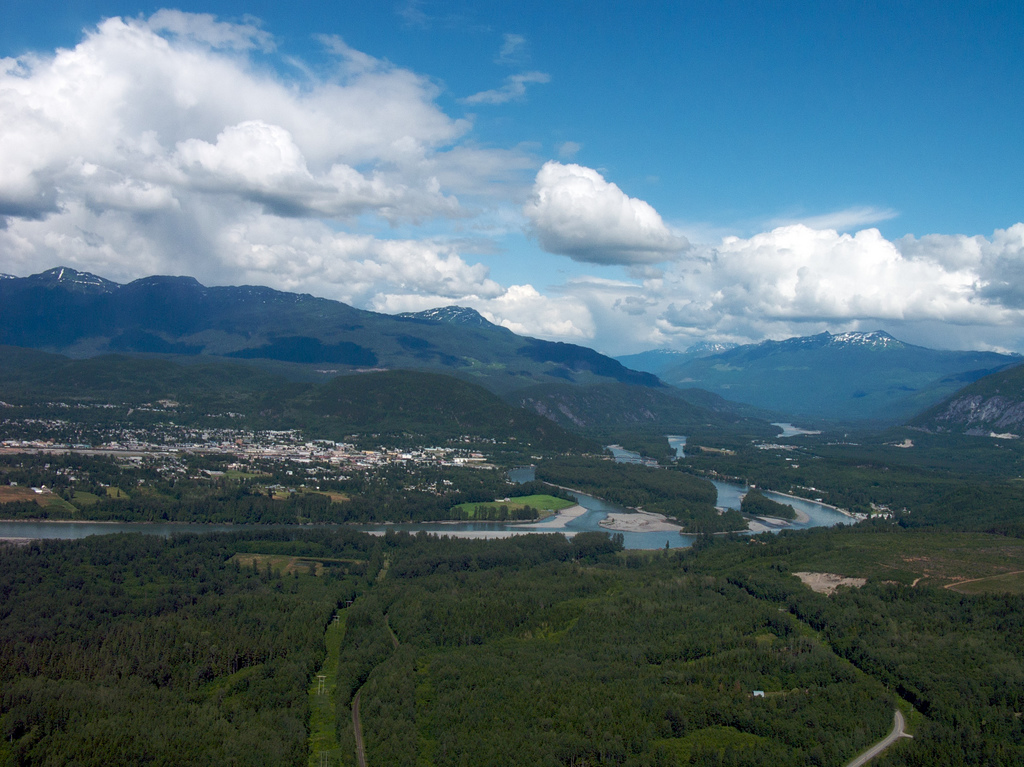ThinkGeoEnergy’s Top 10 Geothermal Countries 2021 – installed power generation capacity (MWe)
Energy Disrupter
Global geothermal power generation capacity stood at 15,854 MW at the year-end 2021. Despite the challenges of the pandemic new capacity was added in several countries.
As with every beginning of the year, we are publishing an up-to-date list of the Top 10 geothermal countries based on installed power generation capacity as of year end 2021.
With the challenges of the pandemic, the sector continues to face challenges, additional capacity was added in several countries with newcomers Colombia (small scale ORC units from co-produced oil) and Taiwan (reestablishing power generation at Qingshui with a 4.2 MW plant) joining the ranks of countries with operating geothermal power generation capacity. The total installed geothermal power generation capacity at year-end 2021 stood at 15,854 MW, an increase of 246 MW over 2020.
Here the Top 10 geothermal countries year-end 2021:
- United States* – 3,722 MW – additional 24.8 MW were added in 2021 (and we updated our numbers as per the notes below)
- Indonesia – 2,276 MW – 143 MW were added in 2021 with the start of the 45 MW Sorik Marapi Unit 2 and the 98 MW Rantau Dedap plants.
- Philippines – 1,918 MW – no change reported
- Turkey – 1,710 MW – 22 MW were added in 2021
- New Zealand – 1,037 MW – the 32 MW of the Ngawha expansion project were added in early 2021
- Mexico – 962.7 MW – no change
- Italy – 944 MW – no change
- Kenya – 861 MW – no change, while the 83.3 MW Olkaria I Unit 6 was in final tests, yet no official start of commercial operations reported yet
- Iceland – 754 MW – a small 300 kW unit was added and construction started on a 30 MW expansion at the Reykjanes plant
- Japan – 603 MW – continued small-scale development, yet no reported additions
*The U.S. total installed and operational (nameplate) capacity stood at 3,787.5 MW, yet ca 65 MW are defined as “standby/ backup and as available for service but normally not used” (EIA). Other sources (REN/ IRENA) would provide a capacity of 2,804 MW as average between net summer and winter capacity, which though would put up different standard for reporting for the U.S. compared to other countries. For further details see notes below.
A total of 246 MW were added in 2021. Other countries represent an installed power generation capacity of 1,067 MW, bringing the total installed geothermal power generation capacity at the end of the year 2021 to 15,854 MW. The largest growth by far happened in Indonesia, which saw an addition of 143 MW in capacity with two new plants, followed by Chile (addition at Cerro Pabellon) and Turkey. Construction continues at the Laguna Colorada pilot project in Bolivia, which will be another great addition in South America in 2022.
We expect a large number of plants to come online in 2022 and see picking up activities both on exploration, drilling and construction of plants.
Notes:
Gathering data on geothermal power plant development is difficult and with our ongoing work on updating our databases, we constantly tweak, update and correct data as we go along. As a disclaimer for the data presented, you will find discrepancies in the data reported by different sources and there are many reasons for this. Some organisations report gross capacity, others operating, others installed capacity, while others take averages of summer and winter capacity. They all have one challenge in common and that is that countries and organisations are often not presenting the same numbers. The result is that numbers for one country cannot be compared with another.
So some time ago, ThinkGeoEnergy decided to apply installed nameplate power generation capacity, but only reflect that capacity that is operating – no matter if the plant produces at full capacity or not. We try our best to exclude plants and MW that are not operating, but it is not easy. For some countries one simply has three or four different data sets and needs to make a decision that might prove to be wrong in the end.

